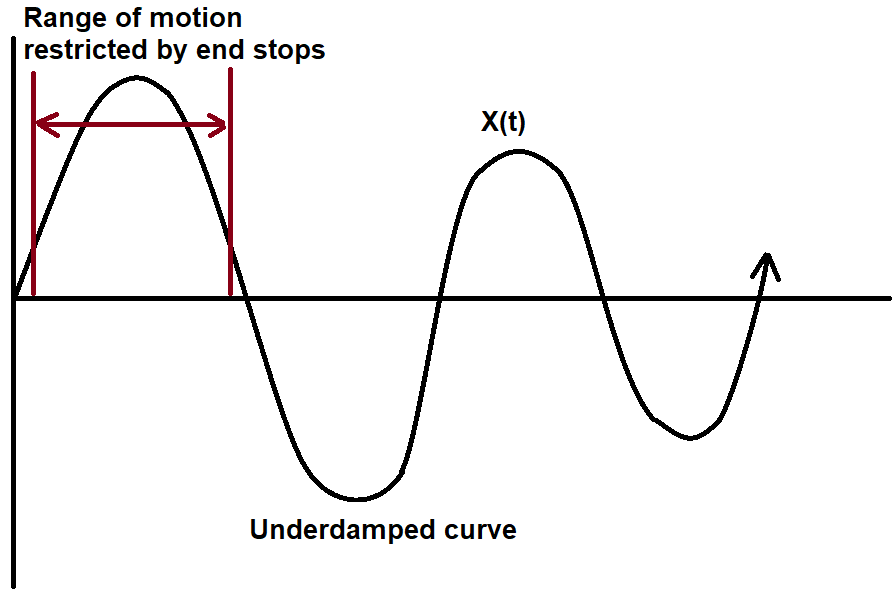I am a ME student trying to understand this system pictured below. I have a mass sliding on a surface with a coefficient of friction $u$, attached by inextensible massless rope to a tension spring of constant $k$, and also attached to a flywheel with a moment of inertia $I$ which spins as the mass slides $x$+ and acts as a damper. The forcing function $F(t)$ is of the form $Ax^2$. The mass is confined to only slide between two stops and the spring is already preloaded under some tension (i will define this as it is stretched by $s$). Essentially, a small burst pushes the mass $x$+ for some distance, damped by friction and the flywheel and then returns to $x(0)$. I would like to assume it is a slightly underdamped system, where it impacts the end stops with some non-zero velocity, and the stops sort of truncate the natural travel. I would imagine that this problem is best solved by using a work-energy balance, but it looks like it fits a second order DE system well. Could someone provide me some guidance on how to solve for the travel function $x(t)$ for this?
I would like to add that I came up with this problem and it is not a homework assignment I just want to cheat on, I drew the diagrams and would just like to get a better understanding of my basic physics.
Below is the block diagram and a graph showing the assumed behavior:
Per the comments below I have added this diagram showing an alternative set up where the rope attaching the mass to the flywheel is wrapped around a bobbin with a smaller diameter than the flywheel.



